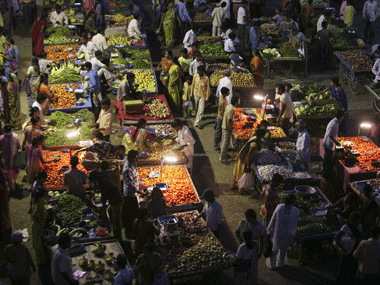On of the big Right-Left debates relates to growth versus equity. The Right argues that growth is vital to redistribute income, while the Left wants to focus on equity before pushing for growth.
The latest data from the National Sample Survey Organisation (NSSO) shows that the two objectives are not incompatible, at least when comparing urban spending patterns with rural ones.
Growth and equality are no longer incompatible bedfellows. In fact, the rural-urban economic divide is lower in faster-growing states than in the slow movers. There is greater equality not just in proportional terms, but also in absolute numbers.
[caption id=“attachment_53766” align=“alignleft” width=“380” caption=“As many as six states had higher rural spends and four higher urban spends than the all India numbers. Reuters”]  [/caption]
For our analysis of growth and inequality, we considered 15 major states for which the latest data on rural and urban spending is available (Monthly Per Capita Expenditure, NSSO, 2009-10). We compared these spends with economic growth, as measured by real GDP figures from 2002-03 to 2009-10.
Of the nine major states that grew faster than India as a whole (7.9 percent), as many as seven - Gujarat, Orissa, Haryana, Chhattisgrah, Bihar, Tamil Nadu and Kerala - showed a rural-urban divide that was lower than the all-India rural-urban spending gap of Rs 930. That is, the difference between urban and rural spending in these seven states was less than Rs 930.
In fact, this trend holds even if we look at the ratio of rural to urban spends. As many as six of the high growth states - Kerala, Haryana, Bihar, Tamil Nadu, Gujarat and Andhra Pradesh -showed a higher ratio of rural to urban spends (55-76 percent) as compared with the all-India average of 53.1 percent.
As many as six states had higher rural spends and four higher urban spends than the all India numbers. Like Kerala, for instance, which has the largest per capita rural spend and the second largest urban spend of Rs 1,835 and Rs 2,413 respectively. The story is similar with Haryana, Tamil Nadu and Gujarat (see table below ).
In contrast, of the eight major states which registered growth rates below the Indian rate, two still have a high absolute urban-rural spending gap. As many as five have an above-average gap in the ratio of rural to urban spends. Most of them also have lower absolute rural and urban spends as such.
In other words, there is now hard evidence that a narrowing rural-urban economic gap correlates with high economic growth across states, and that inequality actually is linked to lower growth.
A poser, though: was the National Rural Employment Guarantee Act a key element in reducing the rural-urban spending gap in the richer states? More research is needed to prove this. But clearly, high growth accompanied by higher social spending is the right way to go.


)
)
)
)
)
)
)
)
)



